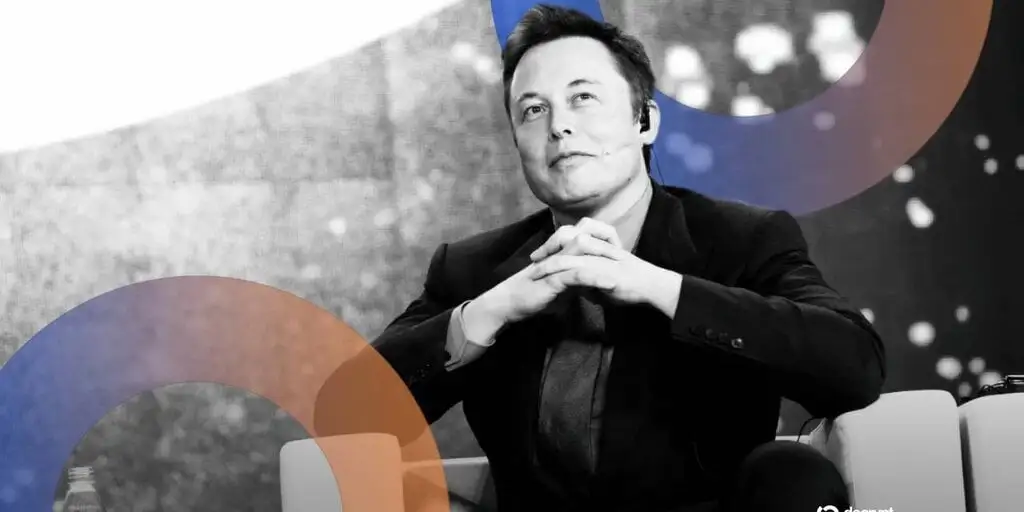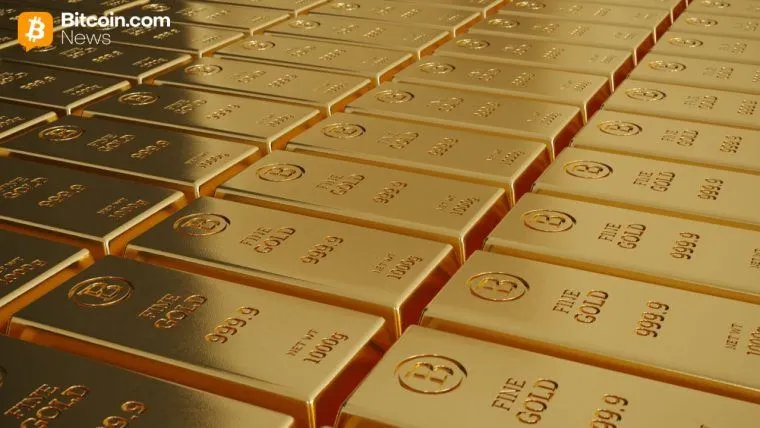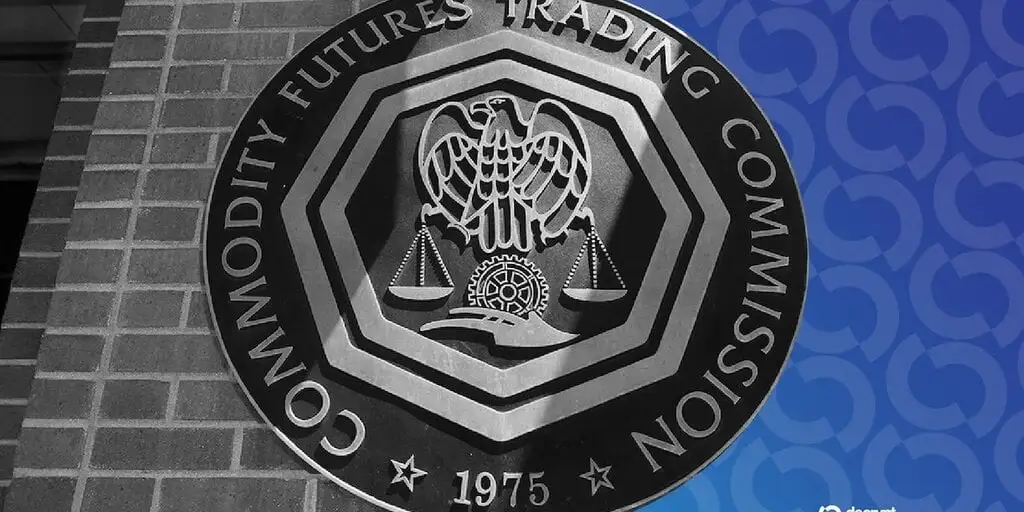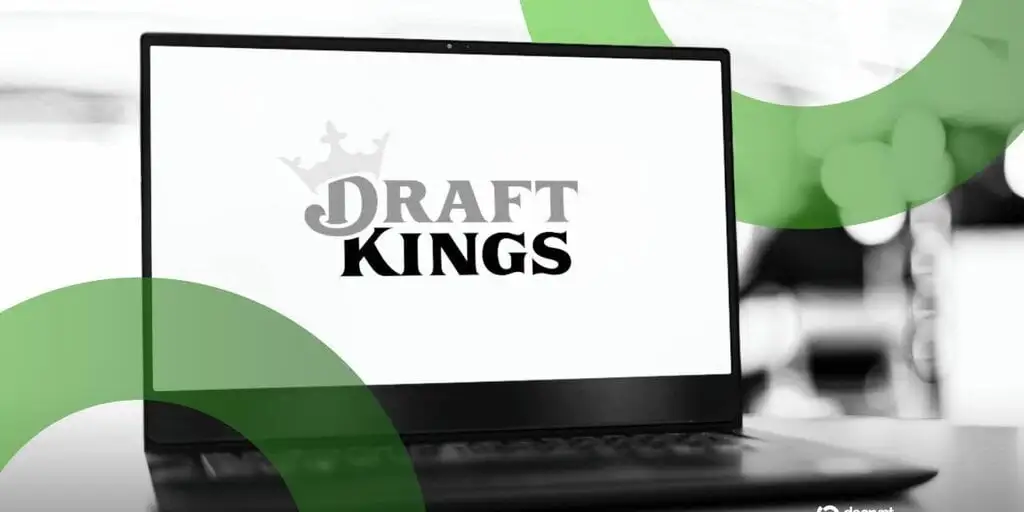"CT Chinese · Crypto Circle Open Mic" is a monthly crypto audio interview program created by Cointelegraph's Chinese site, airing at 7 PM on the second and fourth Thursday of each month. The show invites core practitioners and observers from various fields such as blockchain, Web3, DeFi, stablecoins, the Ethereum ecosystem, and policy regulation to enter the live studio and discuss industry hotspots, market dynamics, and in-depth viewpoints. In a relaxed and open dialogue atmosphere, it presents a more authentic, diverse, and cutting-edge crypto world to the audience.
This episode's theme is: "The Binance Life Amidst the Meme Coin Craze: The Next Move of the Exchange."
Our invited guests include:
- Furina, Operations Manager at Gate Fun
- Diana, BD Manager at BNB Chain
- Leaf, CEO and Founder of Web3 AI project CoreonMCP
- Gabi, a well-known KOL in the Chinese community
(The audio transcription has been processed by AI, with some content edited for brevity. For the complete audio, please visit the X platform.)
Host Eva:
This year, we have seen some profound changes in the crypto market. On one hand, the market has just experienced a significant correction, with a loss of $380 billion in market value in a single week at the beginning of October, of which over $130 billion came from altcoins. The funding rates have also dropped to the lowest point since the 2022 crash. On the other hand, traditional institutions are accelerating their entry. We see that both Citibank and JPMorgan are more actively participating in cryptocurrency trading. The CEO of BlackRock has also publicly stated that Bitcoin serves the same purpose as gold.
In such a complex market environment, the phenomenon of meme coins is particularly noteworthy. From the Trump family's profit of over $400 million through meme coins to the Dogecoin Foundation's commercial branch about to be listed on Nasdaq, we see meme coins undergoing a transformation from community cultural symbols to mature financial assets. Recently, the "Binance Life" has become a phenomenal marketing event, reflecting the key role exchanges play in shaping market narratives. Tonight, we will delve into the theme—"The Binance Life Amidst the Meme Coin Craze: The Next Move of the Exchange"—to explore the strategic positioning and ecological layout of exchanges in the meme coin economy.
We are very honored to have four guests participating in today's discussion. They are Furina, Operations Manager at GateFun; Diana, BD Manager at BNB Chain; Leaf, CEO and Founder of the Web3 AI project CoreonMCP; and Gabi, a well-known KOL in the Chinese community. Before we officially start our AMA, let's have each guest introduce themselves.
Furina:
Thank you, host. Hello everyone, I am Furina, Operations Manager at GateFun. I am very happy to be a guest on CT Chinese's space today, thank you for the invitation. I am also looking forward to tonight's conversation with everyone, thank you.
Diana:
Hello everyone, I am Diana from BNB Chain. I believe many of you here should already know me, especially some builders. We mainly provide official knowledge to the excellent builders in our ecosystem. I am glad to discuss our ecosystem's meme with everyone here today.
Leaf:
Hello everyone, I am Leaf, the owner of Coreon. I hope you enjoy our space. Chinese is my second language; I have been learning it for about three to four years, so I hope you can all understand me.
Gabi:
Hello everyone. I am often active on-chain, whether it was last year's SOL or the recently popular meme on the BNB chain, I have participated in some of them. I also want to thank CT for the invitation today.
Host Eva:
Alright, thank you everyone. Let's officially start today's AMA. The first question, let's start with the Binance Life. Recently, we saw that a tweet reply from He Yi easily triggered a surge in the meme coin of the same name. I would like to ask Leaf first, from your perspective, do you think this phenomenon is a coincidence or a deliberate event marketing? How should exchanges balance between creating hotspots and risk control? Of course, Diana can also interpret this question from the perspective of BNB Chain. Let's start with Leaf.
Leaf:
Okay, I think this is intentional; they really want to expand their influence. But from the perspective of Binance's leaders, they just want to have some fun. When they reply to a meme coin, they really don't know if it will affect its price or reputation. If the project succeeds or fails, they won't take responsibility for it.
I think they just want to have fun on the BNB Chain, and I believe all traders want to have fun too. And what does having fun mean? It means they want to make money and play with friends, right? This is the culture of meme coins; if a meme coin cannot meet this culture, it will block its own small community. So I think balancing these two things is quite important. I think they are doing well in this regard.
Diana:
Regarding the fact that a reply from Yi Jie can trigger a surge in Binance Life, whether it is a coincidence or a conscious influence, I think it actually has both elements. The coincidence lies in the fact that certain topics just happen to resonate with the community's emotions. You can feel the emotional and topical points of the community. Sometimes it really is just one person getting ignited. In fact, no one in our company is trying to post a meme; it's just that everyone feels this emotion, and the coincidence lies in the topic.
So what is the inevitability? The inevitability lies in the fact that the exchange and the chain itself provide a fertile ground for efficient dissemination and liquidity support. Today, whether it is the exchange or the chain, the entire infrastructure is mature enough, information spreads quickly, and the liquidity support capability is strong, so hotspots can be amplified quickly. The entire meme craze, whether in the last round or this round, you will find that it can be spread rapidly, which actually relies on these dissemination channels, which I call "Infra." So from this perspective, we will find that we indeed need the coincidental emotions, and we also need the inevitable "infra" to support the dissemination of this emotion, support the liquidity, and support the amplification of this hotspot.
From the perspective of BNB Chain, our attitude is that traffic serves long-term value. We certainly welcome spontaneous community discussions and hotspots, but we also do not want it to evolve into pure short-term speculation. So we will balance this from two main aspects. One is the acceptance of hotspots, meaning we allow the community to express freely and let creativity have a chance to be seen. So in my daily life, I receive a lot of DMs from memes asking for additional support, but my response is always very simple: the key to a meme is not who endorses you. Just like within our team, no one or any organization endorses any CA. But what I think is more important?
It is your marketing creativity and your culture conveyance; you need to spread your culture and your marketing creativity. So we hope everyone does more creative things, rather than just crazily DMing me. More creative things will be seen by more people, rather than just by me.
Of course, we allow you to express freely and hope creators are seen; this is our acceptance of hotspots. On the other hand, we will also do our best to control risks through contract security audits, risk classification, and risk control. We try to guide users to distinguish which communities have real constructive potential and which are just short-term fads through these risk controls. In other words, we do not stifle the creativity of traffic, but we also need to maintain the safety boundaries of the ecosystem, allowing coincidental hotspots to evolve into long-term user value as much as possible.
Host Eva:
For our second question, I would like to ask Gabi and Leaf, compared to traditional ICOs, IEOs, or other DeFi projects, what is the core innovation point of meme coin launch platforms? Do these launch platforms really lower the threshold for issuing coins, or do they package speculative behavior in the market as a cultural phenomenon? We would like to hear from Gabi first.
Gabi:
I actually think that many of the current launch platforms and bots have indeed greatly simplified the traditional token issuance process. For example, traditional ICOs or various DeFi projects have a core goal of raising funds for the project, needing to emphasize their technical strength and future roadmap to the market and community. However, for meme launch platforms, the core goal is more about quickly launching and spreading the culture of these memes, achieving community consensus, and getting everyone to play together. So I think the core goals are different.
As mentioned earlier, the technical threshold for issuing coins has indeed been greatly lowered. Because for traditional ICO platforms, the basic threshold is still relatively high; at least you need to understand some coding and write and audit it yourself. But for these meme launch platforms, the technical threshold is very low. You do not need to know coding; you might just see any narrative and, through these meme launch platforms, only need to add a name, add the token's image, and design some simple things, and you can issue a coin with just a few clicks. Even in the early stages of building these meme coins, there is no need for a website or social media, so the difference is quite significant.
Including these meme platforms, they do not need to go through the exchange's process. Because for traditional ICOs or DeFi projects, if they want to list their tokens, the process is still longer compared to these meme launch platforms. They need to go through exchange reviews and cooperate with IDOs and various trading platforms, but meme launch platforms are very fast.
In this process, what everyone is speculating about is also different. Traditional ICOs and DeFi projects speculate on the product of the project, the expected future development, and the possibility of profit. But for memes, everyone is speculating purely on emotion and transmission.
In this process, one of the innovative aspects of meme launch platforms is that they integrate investors, including KOLs, content creators, and ordinary retail investors. In traditional ICOs and DeFi projects, these roles are often quite separate; for example, VCs invest, project teams build, and there are early retail participants who engage with the product and others who buy tokens. Everyone participates from different positions. However, in the case of memes, you may find that those who spread and create them coexist in the market, all contributing to the dissemination process together. I think this is quite an interesting point.
However, meme launch platforms also have a dual nature. Technically, they simplify the process, but this simplification has also intensified the tendency for people to quickly speculate and monetize through emotional or hype-driven means. While there is a technical reduction, there is an emotional and cultural addition or multiplication.
Yet, I still believe that memes represent a significant innovation.
Because in this process, whether you want to participate or become someone who trades coins to make money, it has become very simple, even simpler than all previous asset issuance methods. Overall, there are many innovations, but it has indeed brought some market risks.
Host Eva:
I want to follow up with a question. Gabi, you mentioned that you are also a player in the meme space, possibly with the intention of making money. As ordinary retail investors, how can we discern whether a project has growth potential?
Gabi:
After everyone played around on pump.fun last year, the mindset of those who engage with memes has matured significantly. As meme development increases, various chaotic elements emerge, including many scams. For instance, this year, many people are playing on the BNB Chain, and in recent days, several meme projects with scam risks have appeared, but now people's discernment has matured; retail investors have been educated.
People can look at associated addresses, chip distribution, the overall narrative, and some coding aspects. For AI-related or product-based memes, there is a higher risk of scams, while for purely emotional memes, it’s simple; you can just look at the chip distribution.
In fact, different funding sizes or types of people in the meme market have different logics, so I won't offer too much advice.
Host Eva:
What does Leaf think are the core innovations of meme coin launch platforms?
Leaf:
I believe platforms like Pump.fun and FourMeme are like selling dreams. If you have money or a strong network, you can try to create a project without needing any programming experience or technical skills.
Host Eva:
Next, we want to look at this from the platform's perspective. I want to ask Furina and Diana about the attempts made by GateFun and BNB Chain in promoting gamification of meme coins. In your view, how does this gamification mechanism help meme coin projects build a healthier community cycle? Let's start with Furina.
Furina:
When we were building the GateFun platform, our core idea was to ensure that issuing tokens is not something only technical teams can do, but rather that creators, communities, and players can all participate. In this entire process, gamification has become a crucial aspect for us because the essence of meme culture is participation, co-creation, and fun. You can't expect a cold technical entry to carry so much emotion, so GateFun has made many innovations in its mechanisms.
Every token launched on GateFun automatically generates a dedicated community. All users can directly enter discussions, post, and interact. The heat and discussion of posts will accumulate transaction fee rewards in real-time, entering the community reward pool, with users distributing rewards based on their contributions. Simply put, discussing here is like mining. We have also added leaderboards and heat rankings, so we can see which projects have the most active communities and which users are truly driving project growth. This kind of visual incentive motivates users to participate more and makes it easier for project teams to identify their core community strengths.
Moreover, we want to emphasize that the value of gamification lies in not just providing something to play with, but in making play itself an economic activity and a collaborative building effort. From issuing tokens to building, and from building to listing, we have created an ecological closed loop. It is not just speculative behavior; it is also a community-driven evolutionary path. We hope GateFun can become a nurturing ground for meme projects, not just a place where they end; through gamification mechanisms, we want to ensure that the hype can circulate rather than be fleeting.
Diana:
From the perspective of BNB Chain, we actually do not officially engage in this; rather, it is our ecosystem builders who do. For example, the community interaction features mentioned by GateFun, FourMeme also has similar functionalities. I believe those who are active on BNB know more about FourMeme's features than I do. I think more of our ecosystem builders have created many community connections and functionalities.
Regarding the entire loop's closed cycle, you can see that Binance Wallet has also implemented some of these features, but I believe those who are active on BNB know more about it because my experience in that area is not as rich as theirs. I tend to choose memes that truly resonate with my emotions. I am also happy to see community stickiness, where people are brought together through emotional categorization. For example, if I am ignited by Yi Jie's article, I will gather with others who are similarly inspired by that article and want to buy memes. We find that similar people share similar cultures and gather in the same place. This stickiness is very high, and the incentives are very strong. Another point I want to mention is that the benefit of memes is that the threshold is very low, allowing ordinary people to participate. I also want to say that I have never been anti-builder; we strongly support builders. However, at the same time, we want to highlight retail investors. Some retail investors are good at analyzing projects and can find alpha to position themselves early. But some retail investors are novices, and in this case, memes are very fair and align with our grassroots crypto culture, where everyone is equal. A project may be very difficult to understand, but today’s emotions are something everyone can grasp. So I think this brings all participants to a fair starting point. Additionally, memes can lower barriers and increase stickiness through other methods, such as gamification, tasks, community points mechanisms, etc. I believe the existence of memes is very beneficial for more retail participation.
Host Eva:
We also see that meme coins are often regarded as entry assets for exchanges. I want to ask Furina and Diana from different perspectives whether these meme projects can not only attract users and bring traffic but also contribute back to the ecosystem?
Furina:
Of course, and we are already seeing this trend. Many people think meme projects are just short-term spikes, but in reality, they are the strongest user engines in the entire on-chain ecosystem. Every project that issues tokens on GateFun means a batch of new users is engaging with Web 3, creating wallets, and participating in transactions. When you see a project issue tokens, build, and get listed, it not only increases its own hype but also boosts the overall activity of the Gate layer public chain, increases trading volume, enhances wallet interactions, and enriches cross-chain data—all of which are direct contributions to the ecosystem.
At the same time, GateFun's community mechanism ensures that issuing tokens is no longer just an action by the project team; the discussion heat among community users, post interactions, and content creation will enrich the overall content ecosystem of the platform. In other words, meme projects are not just sources of traffic but sources of vitality.
Interestingly, we find that these projects can form a positive cycle. What does this positive cycle mean? It means that as the community becomes more active, the project's discussion and trading volume increase, and the platform's traffic naturally grows. The platform's traffic, in turn, feeds back into these projects, helping them expand. This creates a new symbiotic relationship. Here, GateFun's role is to provide a soil where every project can attract users, stimulate discussions, and allow this energy to nourish the entire ecosystem in return. This is our understanding of traffic feedback; it not only brings transactions but also creates long-term ecological value.
Host Eva:
The next question will focus on the long-term fate of these projects. Many meme coin projects are indeed fleeting. I want to ask Gabi and Leaf how a project can break free from the fate of being merely speculative peaks?
Leaf:
I have a very simple answer: it’s about the business model, right? How to make money is about capturing your users' attention, attracting them to use your platform, and ensuring they enjoy using your technology or platform, allowing both investors and users to see that you are seriously developing this platform. Regardless of the project, it needs to expand its culture and ideas.
Gabi:
I think the crux of this question is how to ensure that the project's community and its tokens can sustain themselves in the long term. One point is that the community leaders or the project team itself need to guide the community to co-build together. For memes, it is very important for everyone to work together, such as bringing in more new people and guiding them to use a portion of the tokens to do something meaningful for the community. This allows community members to not only participate but also feel a sense of belonging, making them willing to contribute to the community. The second point is that for memes to exist long-term, they still need support from exchanges and platforms. For long-term development, you cannot let your community remain stagnant with just the current members; instead, you need to figure out how to turn onlookers into people who want to become part of your community. Because if it is merely a meme or a pure meme thing, over time, people will gradually forget it. So having a long-term reason for existence is also an important factor in attracting others. Those are my thoughts on this question.
Host Eva:
Next, I would like Furina to share whether GateFun has any measures like community co-building or incentive mechanisms to support the long-term development of these meme projects?
Furina:
Regarding the mechanisms for long-term development, we certainly have them. This is also one of the souls of GateFun.
We do not want projects to simply disappear after issuing tokens. Therefore, when designing the mechanisms, we directly embedded a community incentive system. For example, when a project is launched, the system automatically allocates a portion of the transaction fees into a community reward pool. The more active users are in posting, commenting, and interacting, the more rewards they receive. Moreover, this ratio will gradually adjust as the project grows. When the project's market capitalization exceeds a certain level, the structure of the reward pool will also change. This guides the community to shift from short-term hype to a direction of long-term operation.
This is essentially a tokenized community incentive mechanism. Users are no longer just investors; they are participants in the community, content creators, and contributors to traffic. The project team can also use this data to understand the community's real activity level and make more precise operational decisions. More importantly, this mechanism ensures that meme projects are no longer just about emotions but are based on real interactions. This is the continuous co-building logic that GateFun aims to bring, allowing community enthusiasm to be sustained and project growth to be more sustainable.
Host Eva:
For our final question, we would like to invite Furina and Gabi to share their views. How do you see the evolving relationship between exchanges and meme culture? Do you think it will become a new user growth engine, or is it merely a cyclical market bubble?
Gabi:
This question can be answered by looking at why exchanges need to bind with some memes. The first aspect is that memes inherently leverage virality, community culture, and low barriers to attract more users to participate. For example, as Diana mentioned earlier, memes can bring in new users, and many of those currently engaging with memes are quite young. Therefore, I believe memes are a very effective tool for attracting users or a traffic engine. For exchanges, this represents a large user base, which can bring significant trading volume and more viral traffic and visibility.
The second point is that memes are also very suitable for testing "infra" tools; they can test the performance of public chains or the resilience of "infra."
Thirdly, memes provide a good source of income for exchanges or platforms. For instance, pump.fun had substantial revenue last year, which is why we see major exchanges now developing their wallets and launch platforms. In this process, they provide spaces for users to engage, from which they can also earn good transaction fees or profits, making the entire ecosystem more vibrant.
Returning to these points, exchanges certainly need to interact and support memes. However, memes can easily form bubbles or become speculative behaviors, so exchanges need to maintain some balance in this process.
Currently, exchanges and many platforms have already delved deeper into the entire meme industry chain, such as creating their own launch pads to restart projects, providing liquidity, and offering one-stop services for listings. Binance has done this very well, transforming the relationship between exchanges and memes from merely listing a popular meme to participating in the entire industry chain and aiming to provide one-stop services for the meme market.
Of course, users also need to have a certain level of control during their participation. Currently, for the entire meme market, the most important thing is for the market to heat up.
Furina:
I personally believe that the relationship between exchanges and meme culture will definitely deepen in the future. We know that in the past, exchanges were merely markets that provided liquidity and matching. However, now products like GateFun are turning exchanges into places for creativity to emerge. Meme culture is essentially an amplifier of emotions, while exchanges are naturally amplifiers of liquidity. When these two combine, it creates a very strong resonance. Users are not just here to trade; they are also creating, interacting, spreading, and expressing, and the role of exchanges evolves from being a trading platform to a community ecosystem.
In the future, we will see more of these models. Tokens will carry communities from the moment they are launched, with communities generating heat through discussions, which in turn drives trading, and trading feeds back into the community, forming a cycle. This is also my understanding of the spirit of Web3, which is one of open co-construction and sharing.
Memes are also a starting point; they make the relationship between exchanges and users more three-dimensional and warmer. Therefore, I believe that our platform aims to transform this relationship from a fleeting trend into an ecosystem.
Host Eva:
Thank you to our guests for the wonderful sharing. Today's AMA has deeply explored topics such as exchange strategies, community building, and risk control under the meme coin boom. The meme coin market is evolving from mere speculative hype towards a more practical and community-driven direction. However, the high volatility of this market and regulatory uncertainties remain risk factors that investors need to pay close attention to. We hope today's discussion provides valuable perspectives and thoughts for our audience.
We look forward to gathering with our audience again in the next event. The CT Chinese Crypto Circle AMA will be broadcast on the second and fourth Thursday of every month at 7 PM. We will continue to bring you the latest insights into the crypto market, in-depth industry analysis, and exciting community interviews. Once again, thank you to all our guests for their enthusiastic participation, and thank you to our audience for joining this AMA. See you next time.
Original text: “CT Chinese Crypto Circle | Binance Life Amid the Meme Coin Boom: The Exchange's Next Move”
免责声明:本文章仅代表作者个人观点,不代表本平台的立场和观点。本文章仅供信息分享,不构成对任何人的任何投资建议。用户与作者之间的任何争议,与本平台无关。如网页中刊载的文章或图片涉及侵权,请提供相关的权利证明和身份证明发送邮件到support@aicoin.com,本平台相关工作人员将会进行核查。




